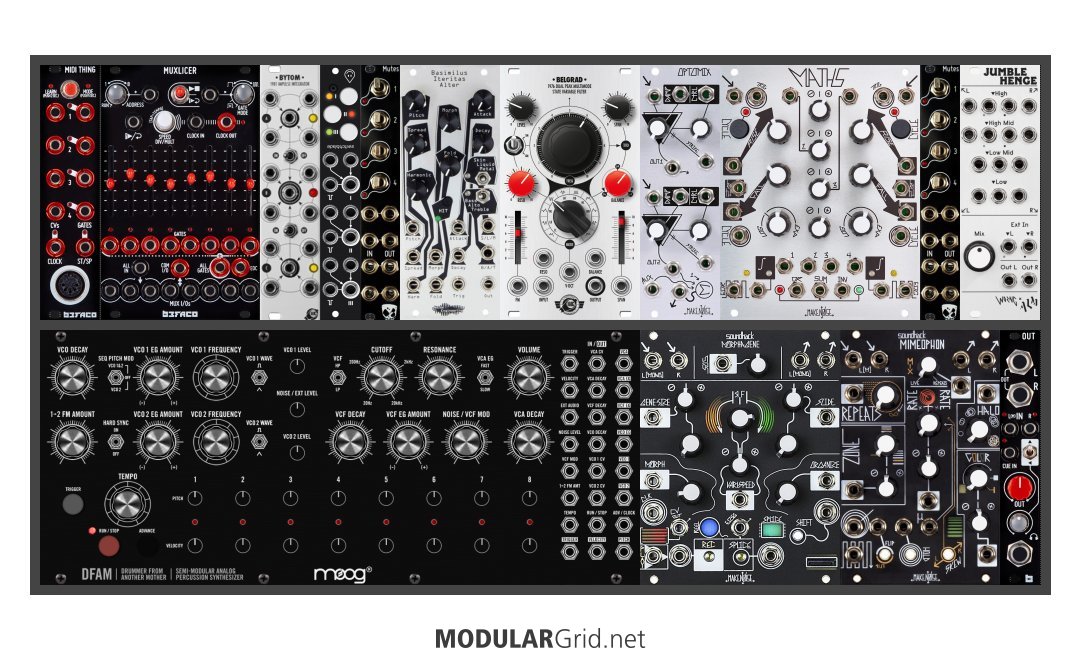I would personally opt for just one complex oscillator, on top of removing the 3u audio jacks in favour of utilizing a 1u outs module for that (or just get the headphone 1u module if you absolutely want phones connection).
whilst Maths is a serious modulator, I think you will quickly find a threshold for modulators if you need to use half for VCA control. I would personally choose the DPO over the Brains, however they are very different in execution. Complex timbres or lack thereof are great via the DPO sans a filter. The Brains being a Braids clone can handle lots of different styles of oscillator algorithms for output on top of drum engines built in.
If you just want a sick synth voice for bass/leads, I would pull the Brains, Filter, Steppy, Outs, and swap them for another complex modulator (maybe Mutable Stages - very handy for small cases). Scales is great, but the sequencing can become tedious compared to other sequencers (Sh101 style) so it may be something to consider with the extra space to check out something like the Muxlicer from Befaco or something with addressable steps that aren't super linear unless you want that. Theres so many great sequencers in modular, or the ability to create your own if clever.
The beauty of modular is the modulation/sequencing/switching schemes that result in complex tones/music accordingly. These modulations can still be done via hands somewhat, but you only have 2. The nice thing about the Morphagene is you can record passes of knob twists and layer on top, but you have to play that into your approach on any given patch.
X-Pan is a better mixer than VCA solution (it can be used as a general VCA, but somewhat overkill for what you need). I would swap that out for maybe a LxD or maybe Veils fader version for more VCA controls as needed. I would just feed that into the morphagene and feed the L/R directly to the outputs. The 1U VCAs are great for utility, but the lack of attenuation directly on them leave one wanting (same deal as LxD), you could use channels 2/3 on Maths for this I suppose.
I mocked up this skiff that I personally would rather see: More modulation options, attenuation/attenuverter options, focused on the main oscillator for tweaking. You have 4hp extra so in theory could throw a mutable marbles as the main sequencing option for more interesting/evolving patterns over time/modulation friendly. Unfortunately space fills up fast if you use modules that are 20HP+.
https://cdn.modulargrid.net/img/racks/modulargrid_1637313.jpg


